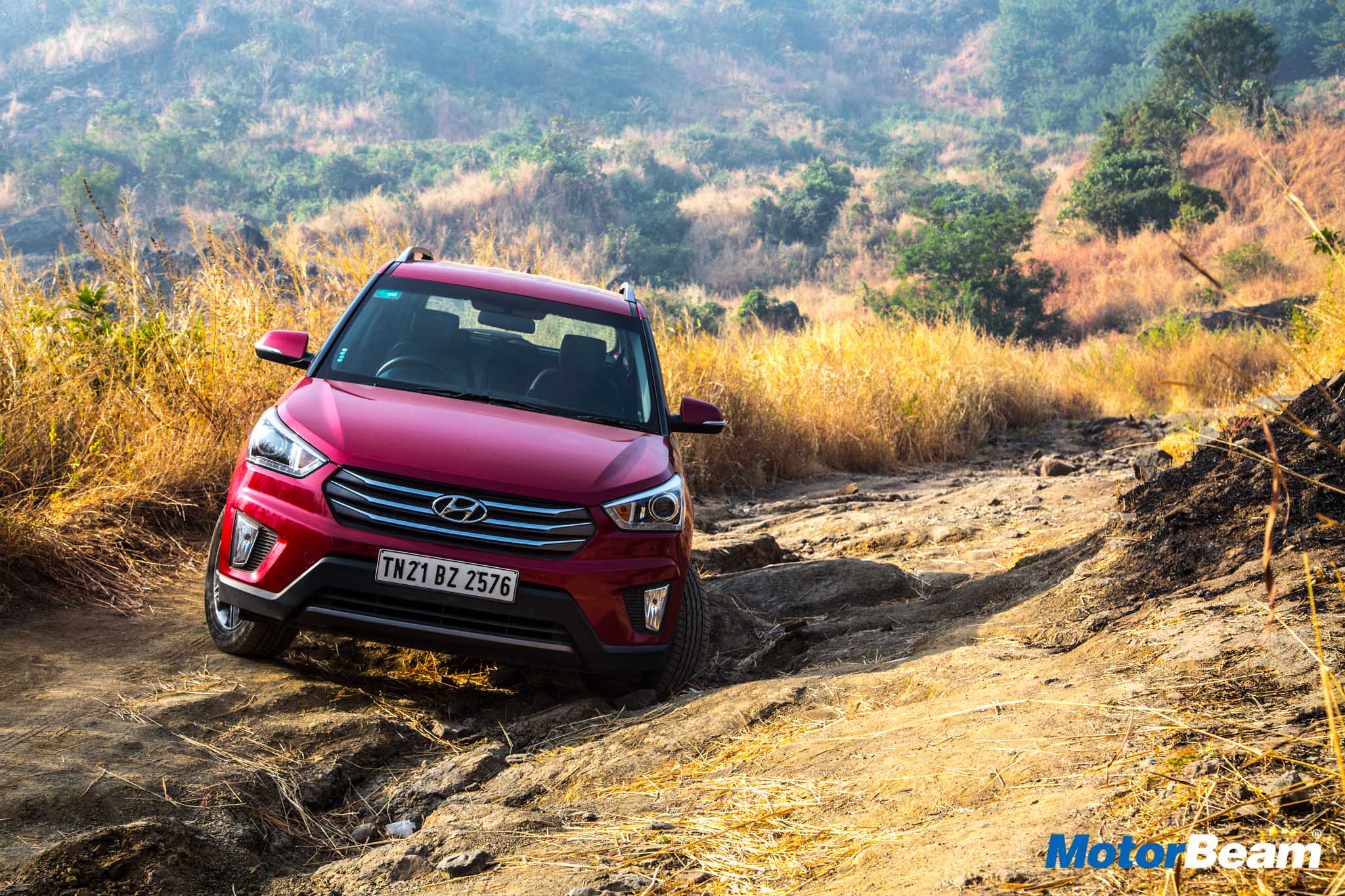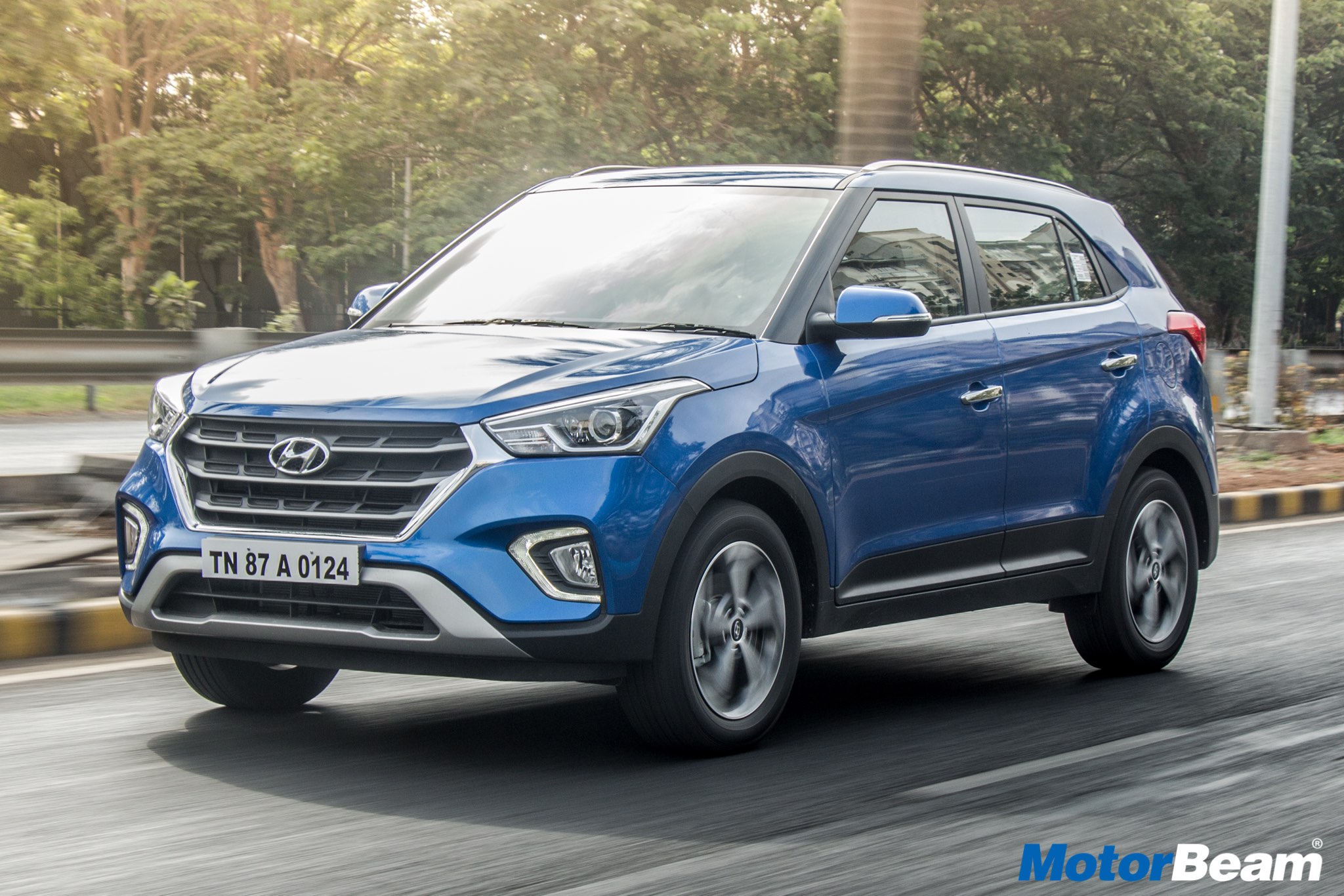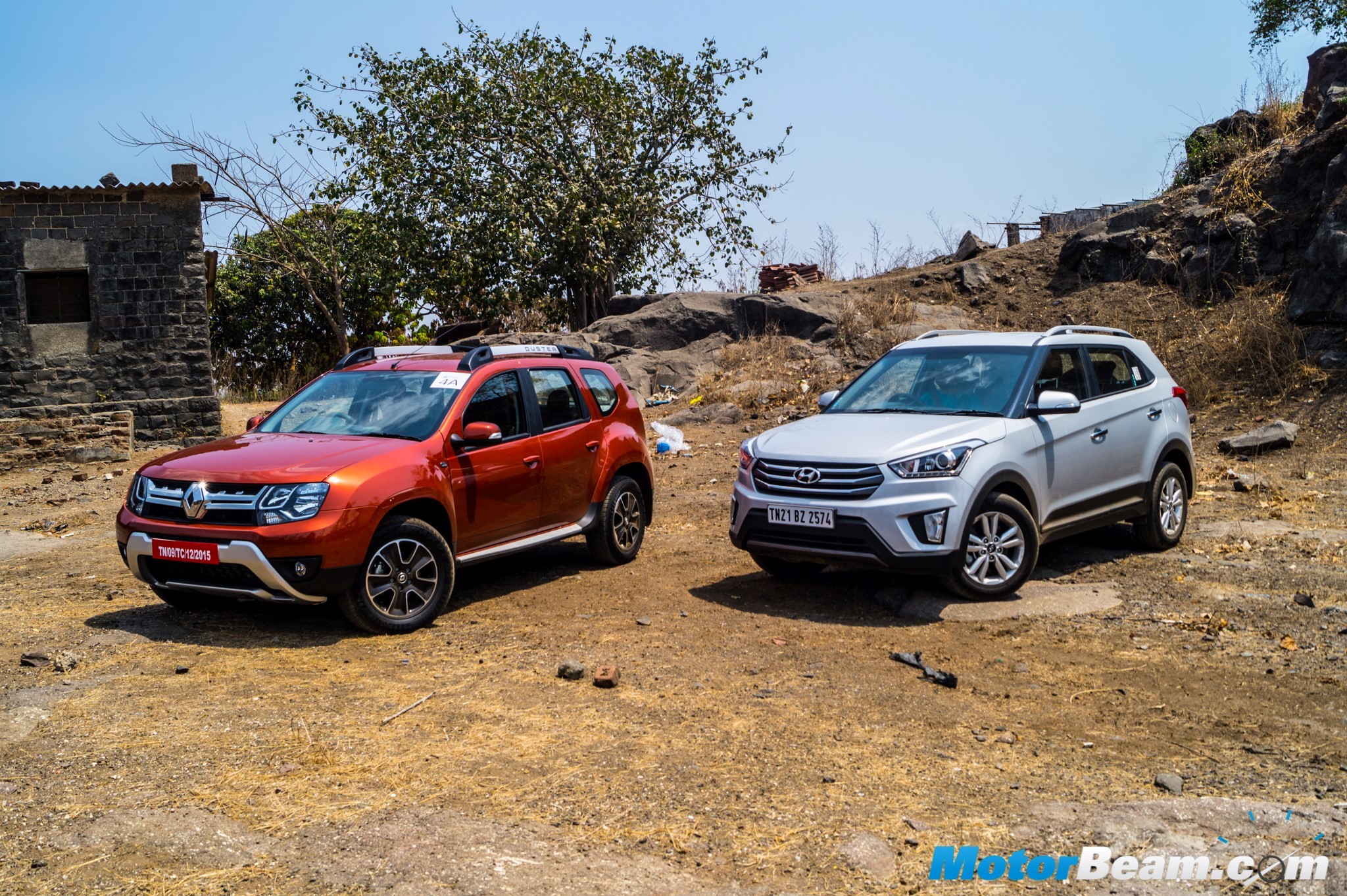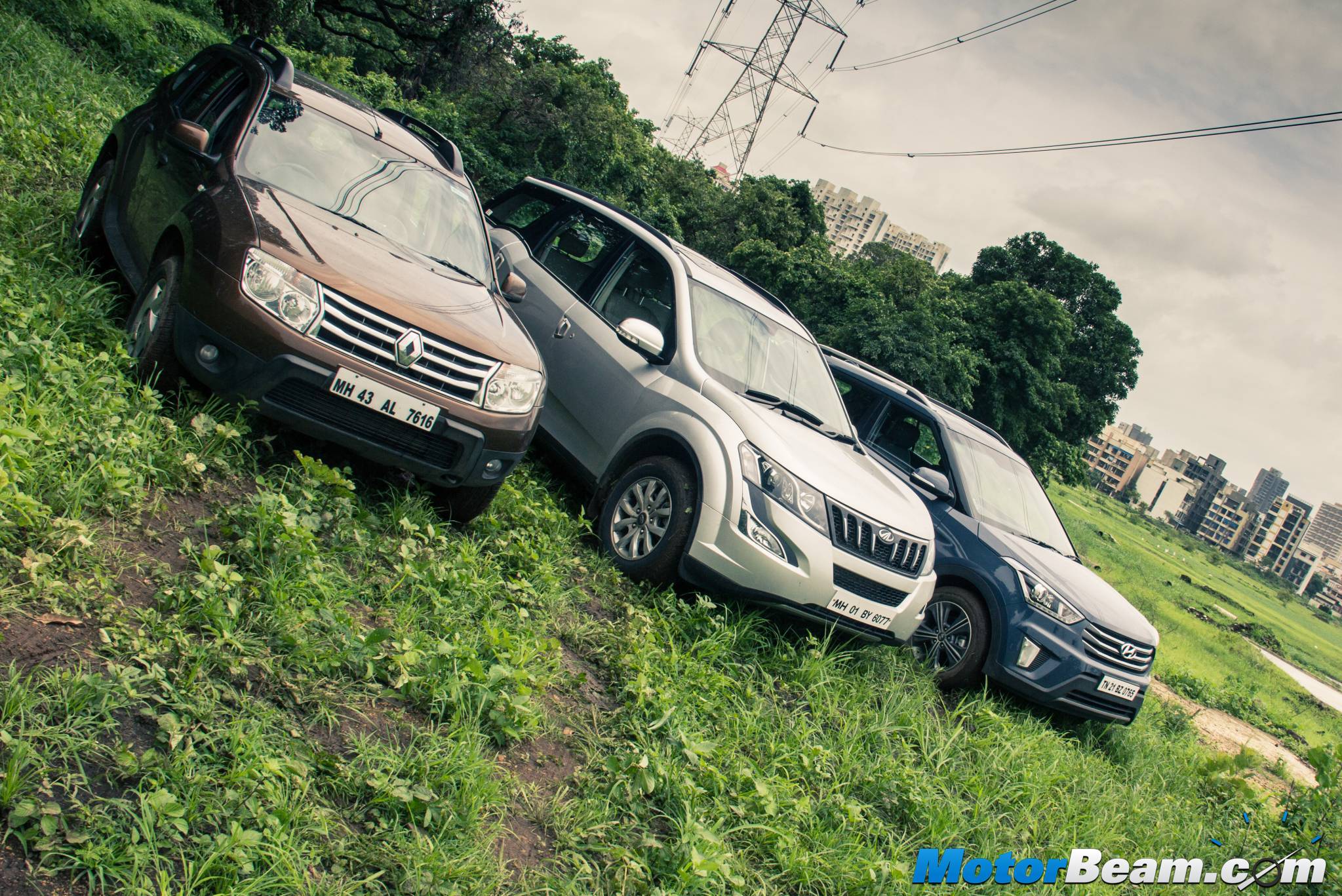Used Hyundai Creta – How To Buy
We tell you about the things to check while looking out for a pre-owned Hyundai Creta.
We tell you about the things to check while looking out for a pre-owned Hyundai Creta.
Home » Car News » Hyundai Creta » Used Hyundai Creta – How To Buy

It was in 2015 when Hyundai launched the Creta for the first time. The first generation of this compact SUV wowed people with its design, features and multiple engine options. The Creta went on to become the highest selling car in its segment and while at it, it also crafted a good brand value for itself.
The first generation Hyundai Creta was recently discontinued to make way for the second generation of this vehicle. The 2020 Hyundai Creta is again quite impressive but the first gen doesn’t really feel all that outdated. Because this car sold in such good numbers, there are a lot of examples available in the used car market and these vehicles can make good sense for people who have the budget of a new premium hatchback or compact sedan.
The first generation Hyundai Creta was offered with three engine options – 1.6-litre petrol, 1.4-litre diesel and 1.6-litre diesel. The 1.4-litre engine was offered only with a manual gearbox while both the 1.6 units were offered with the option of a manual or an AT. In 2015, the Creta was priced from Rs. 8.60-13.58 lakhs (ex-showroom).
In 2018, Hyundai gave the Creta a mid-life facelift with some cosmetic changes and feature additions. The vehicle felt more appealing with these updates and the new equipment was useful too. The updated Creta was priced from Rs. 9.43-15.03 lakhs (ex-showroom).
We have spoken about the vehicle’s design, presence and comfort enough in our older reviews and comparisons. The first gen Creta came across as a huge enhancement over some of the older Hyundai cars. There was a noticeable improvement in terms of quality and driving feel. The 1.6-litre petrol engine had decent punch on offer and it was a smooth powertrain. The 1.6 diesel unit was also quite refined in stark contrast to some of the noisy and gruff oil-burners offered by many other mass-market automakers. The diesel engine, which produced more power than the current 1.5 unit had a very lusty torque surge.
While the manual gearbox on the Creta was a smooth shifter with a light clutch, the AT wasn’t bad either. Both the engines got a 6-speed torque convertor and the diesel-AT combo was quite popular. Hyundai sold a good number of petrol variants too but the petrol AT wasn’t available at launch and it arrived later. The Creta 1.4 diesel sold in limited numbers because the 90 HP unit felt a bit underpowered on a car of this size (same engine was offered on the i20, Verna and Venue too). The Creta offered a comfy ride with its soft suspension tuning while the light steering made sure the vehicle felt easy to drive around. High speed manners were good but the Creta wasn’t a corner carver and the steering’s feedback could have been better. While the braking performance was fairly good, the ABS used to be overly intrusive.
First you need to decide which variant of the Hyundai Creta do you want. The petrol variant makes sense only if your running is on the lower side because this engine scores average marks for fuel efficiency. With the manual transmission, you can expect 10-11 km/l in the city and about 13 km/l on the highways while the AT variant will deliver around 8-10 km/l in the city. Apart from the fuel efficiency, there are no major negatives of the petrol engine as such.
If your running is on the higher side, it makes complete sense to get the 1.6 diesel variant. This engine doesn’t have a very annoying diesel clatter and it offers a good bundle of performance and efficiency. The 6-speed MT is a good gearbox but try to get the AT just for the convenience. The 1.6 diesel will deliver about 12-13 km/l in city traffic and can go up to 18-19 km/l on long highway stretches. There are a few examples of the 1.4 available but buy that variant only if your purse strings are really tight. It offers commuter performance but is a bit more efficient than the 1.6.
The Hyundai Creta is a very reliable vehicle so finding a good condition car shouldn’t be a herculean task. The SUV has good paint quality and the body also feels sturdy. The Creta isn’t known for any rusting issues but do have a proper look at every body panel properly and see if there are signs of repainting. The Creta, being high on ground clearance, is likely to have been taken on rough roads regularly by some owners so try to get a proper look at the underbody and note the damages if any.
The life of the clutch depends on the driving style and if the clutch feels heavy or sticky, it is better to have it checked and get an estimate on the expenses. The suspension is usually quite silent on a nicely maintained car but if you hear any unusual noises or thuds, see what is the issue and what all components would need replacing. The steering rack can also go bad if the car sees poor driving on poor roads frequently and a noisy/rattly steering is a sign of this.
If the braking performance feels unsatisfactory, you could be looking at a replacement of brake pads. Sometimes injectors tend to get clogged if poor quality fuel has been filled up in the car. If the engine stalls or struggles at low RPMs then you might want to have the injectors looked at. Hyundai’s AVN system is generally good but some early batches had minor niggles so find out if the software has been upgraded or not. Once you like a car and have shortlisted it, it might be a good idea to ring up the Hyundai service centre and ask for the vehicle’s history, or better still, take the car there for a general check-up.
The Hyundai Creta has a service interval of 10,000 kms and major services are carried out every 20,000 kms. These major services usually cost somewhere near Rs. 10,000/- which is a reasonable cost for this segment. Hyundai has a vast service network across India so servicing this compact SUV isn’t likely to be an issue. Due to the high sales of this car, spare parts are also available easily.
If the vehicle’s clutch has gone bad, a proper clutch overhaul will cost you almost Rs. 20,000/- while replacement of the brake pads should cost about Rs. 5000/-. If the injectors are clogged or damaged, then you could be looking at a fat bill. Clogged injectors are common on a lot of diesel cars that see frequent highway runs to semi-urban or rural areas and adulterated fuel is filled up. We recommend using only known fuel pumps while fuelling up in the city and out on the highways try to look out for company-owned company-operated pumps as much as possible.
An insurance policy for the first gen Hyundai Creta can cost anywhere between Rs. 13,000/- to Rs. 20,000/- depending on the age and variant of the vehicle. Avoid opting for third party insurance policies and get a comprehensive policy as a minimum. Since the Creta isn’t a very old car, most insurers will be happy to offer a zero-depreciation policy and it is totally worth it to get such a policy because the slightly higher premium offers peace of mind throughout the year and in case you claim your insurance, you won’t really have to pay anything apart from some nominal charges.
The petrol variants are available for lesser prices than the diesel ones. If you want a base spec E or S trim, you can easily land one for about Rs. 7 lakhs. However, the SX trim has much more features so we recommended buying that one. Petrol SX models usually have a starting price of Rs. 8 lakhs for 2015 manufactured cars and it can go all the way to Rs. 11 lakhs for later models. The price also depends on how much has the car run and whether it’s an AT or MT.
The diesel variants command a better resale value and the starting price is somewhere near Rs. 8.50 lakhs. The diesel automatic is priced more than the manual but there are a lot of diesel cars that have run well over 75,000 km and these are priced a bit lower. A low run S or S+ diesel will cost the same or a bit more than a high run SX/SX(O).
2018 onwards models are priced a bit higher. The lower petrol variants of the facelifted model are priced at about Rs. 9-9.50 lakhs while higher variants go up to Rs. 12 lakhs if the vehicle is just a year or two old. The facelifted diesel models are priced from Rs. 13-15.50 lakhs. Since there are many options in the used car market, use it to your advantage and bargain hard if you like a car. There could be expenses like new tyres, insurance renewal, immediate service, etc. so calculate the cost of these and try to reduce it from the amount that you pay. A pre-facelift, moderate-run diesel AT model at Rs. 10-10.50 lakhs is a sweet deal.
The used car market is huge and in this price range you can get a variety of cars. The current generation Verna which was launched in 2017 can be had for roughly the same prices as the Creta and it is a great alternative if you want a sedan. The Honda City fourth generation facelift is also a good car to consider.
If you want only an SUV then the Renault Duster and Mahindra XUV500 are good bets. The Duster has lesser features but offers a better ride and is more capable off the road if you get the AWD variant. While the Creta got a torque convertor AT, the Duster got an AMT with the diesel engine. Renault has less service centres than Hyundai but the Duster is also a reliable car to have.
The Mahindra XUV500 can be considered too. It got a facelift in 2015 and another one in 2018. 2015 onward models are more reliable and have better features too but the ride is known to be bumpy. However, you get an additional row at the rear. The initial version of the XUV500 is available for attractive prices but most of the early batches had some or the other niggles.
The current Mahindra Scorpio can be had for Rs. 7-11 lakhs and it offers a proper SUV feel and comes with 4×4 too but the vehicle lacks features and modernity. The ride is again bumpy. The Tata Safari Storme’s resale value isn’t all that great and examples are available right from Rs. 3.50-10 lakhs (lesser prices for the pre-facelift models) but if you’re going for this, get the facelifted one. Very few examples are available in the used car market though, and finding a well-maintained one is even more difficult.




